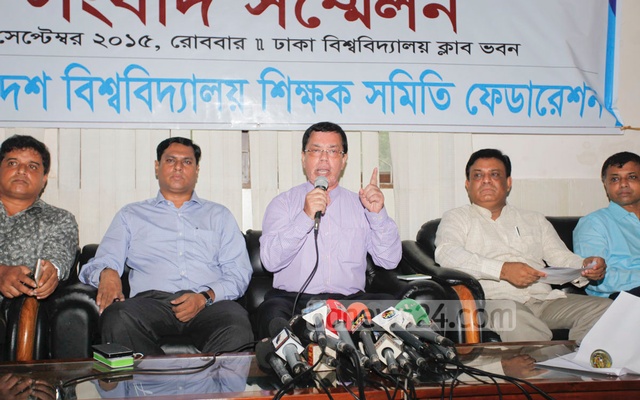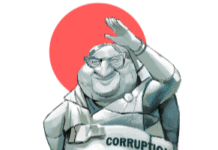M A Taslim
The problem for the government started with the machinations of the bureaucracy to downgrade the position of the professors of the public universities. Till the new pay scale the selection grade professors were at the top of the scale. But the new pay scale purported to downgrade them a couple of notches. Understandably the university teachers were greatly agitated by this blatant move. Their dissatisfaction coalesced into a countrywide movement of the public university teachers. It quickly spread to other sectors, especially college teachers and government employees at the lower end.
Some harsh comments of the senior bureaucracy as well as some ministers aggravated the grievance, and at times it looked like the movement of the opposition coalition could be replaced by the movement against the pay scale. Instead of bringing kudos for the government, the new pay scale paradoxically stoked serious anti-government sentiments even among a large section of the teachers and other government employees who were otherwise Awami League supporters. The government eventually relented and reached a settlement with the protesters. The new pay scale became partially operative from 1st July 2015 with a near doubling of salaries only. Increased allowances will come into effect from 1st July 2016.
The protests did have a positive spin for the government; it focused the attention of the university teachers on their relative position such that what they actually received in absolute real terms did not receive much attention. The government and media hyped up the nominal increase in the salaries pandering to money illusion. However, what matters to the living standard of the salaried people is not the nominal raise given by the new pay scale, but the real increase (or decrease) in salaries. The difference arises due to an incessant increase in consumer prices as well as any increase in income tax due to bracket creep.
To find what the salary-earners actually gained, their post-tax salaries need to be deflated by the price hike during the period. To illustrate, the pre-tax and post-tax nominal salary of the selection grade professors (this was also the salary of Grade 1 government employees) are shown in the second and third columns of the table below and the consumer price index (2008-09 = 1.00) is shown in the fourth column. The nominal salary needed to keep the real salary constant at the level awarded by the 7th pay scale on 1st July 2009 is shown in the fifth column. Since this adjustment was not made, the real salary declined. The sixth column shows the real salary of the professors at 2008-09 prices. The loss (or gain) suffered by them per month in real terms is shown in the last column. It is evident that the professors (and first grade government employees) suffered quite large losses all through the period the 7th pay scale was operational, i.e. 2009-10 to 2014-15. Only when the new pay scale came into effect the nominal salary increased sufficiently to offset the loss. The new post-tax real salary was slightly higher than the real salary received on 1st July 2009.
As indicated by the sixth column, by the time the 8th pay scale came into effect, the real salary had declined by 27.6 percent. The 95 percent hike in nominal salary offset the real loss due to price increases and raised it above the real salary of the immediate past year 2014-15 by a mammoth 45.8 percent. This is what attracted most attention, but it was overlooked that the new salary was greater than the 1st July 2009 level by a measly 5.5 percent with no compensation for the losses of the earlier years. Since there is little chance of any increase in salary in 2016-17, and near certainty that prices will rise, even this small increase in real salary will dwindle and could become negative. Thus even after 8 years of coming into force of the 7th pay scale on 1st July 2009, the real salary of the professors (as well as equivalent government employees) will not be more than what it was on that day.
One could look at the situation in another way. Suppose the government had ensured that the real salary of the professors remained constant at Tk40,000 per month by adjusting the nominal salary in a manner as indicated in the fifth column of the table. It then taxed the real salary by the amount shown in the last column. The result would be exactly the same as it had actually transpired; the post-tax salary would be as shown in the sixth column. Thus the effect of inflation on the real salary is exactly the same as taxation. Inflation deprived the professors of real income to the tune of Tk587,727 (or the salary of about 14 months) during the 6 years the 7th pay scale was in operation; that is their real income was essentially taxed at an average annual rate of 19.4 percent even after their tax was paid by their institutions.
The illustration above shows the adverse impact of inflation on the fixed income earners in the absence of cost-of-living indexation of salaries. Such indexation to protect salary or wage earners from an erosion of their income is commonplace in many countries. Between 2009 July and 2016 June the national income of the Bangladesh increased by 54 percent, but the professors got very little of this increase; instead they were made to pay heavily. The same was also true of all other teachers and employees in the public sector. Whatever efficiency gain these people had achieved during these years went unappreciated and unrewarded.











